One regular reader of this blog recently accused those of us involved in the Capa D-Day project of “beating a dead horse.” Though I disagree entirely, I find this understandable — from a reader’s perspective — after more than seven years of regular posts on that subject. So I thought I’d explain the perseverance of the team involved, and especially my own, over this considerable stretch of time.
Of course I could argue that it’s my blog, so I can do with it — and on it — as I please, just as visitors and subscribers can freely disregard any posts in this series and even unsubscribe if periodic announcements thereof in their email inboxes prove unbearably irritating. But that’s a shallow response that avoids the real matters at stake.
To begin with, and perhaps most importantly, I continue to find the complex of issues involved in the creation and perpetuation of this widespread myth of interest. If I didn’t, I’d surely have bagged it long ago.
Along the way I’ve had the great good fortune to attract to this pursuit a number of like-minded colleagues, whose enthusiasm and commitment to ferreting out the truth has moved the project forward at critical junctures, thereby energizing me to continue my own efforts and provide a platform for their contributions. Together we have pulled in a subsection of this blog’s readership that welcomes (or at least tolerates) new installments of the saga. The unexpected emergence and coalescence of this community in itself justifies our keeping on keeping on.
Not unpredictably, over time this investigation became controversial, enough so to draw the attention of others from various parts of the world — not just members of the general audience for photography but critics and historians of the medium, media scholars, cultural journalists, and professionals involved in one or another of the institutions implicated in the making of the Capa D-Day legend. Whether they have taken positions pro or con the research and the conclusions we base on it, they keep their expert eyes on the material we develop here, which keeps us on our toes in regard to ensuring that this inquiry meets professional standards in the several relevant field.
Its controversial aspect effectively ensures that those antagonistic to it will quickly point out errors, oversights, and unanswered questions, using those to undermine the project’s overall credibility. For that reason, I consider it strategically savvy to anticipate those objections, asking and answering reasonable questions (and sometimes even unreasonable but persistent ones) along the way.
Strategic value aside, I would want to do that anyway — because it’s what scholarship and critical thinking demand. As I wrote elsewhere, many years ago, “What if …?” and “Suppose I’m wrong?” form the foundation of serious critical inquiry. Practically speaking, you can’t turn over every stone and follow every lead in a given search. Even the most thorough doctoral dissertation includes a discussion of its limitations and a set of questions meriting further study. At the very least, however, you have to engage with those that have obvious bearing on the matter at hand, while acknowledging the omission of those that, for whatever reason, remain unaddressed and open.
I should add that, from a technological standpoint, the combination of the web and blogware enables this approach and even encourages it, in a way that no analog medium could possibly do. This inexpensive platform offers unlimited space and global reach. Journaling an investigation in the way that we do here (as distinct from synthesizing its results) therefore becomes an easily achievable option, with the tying up of loose ends costing nothing more than time.
The long and short of it: We have made and continue to make a collective argument in support of a radical deconstruction of an enduring media myth — arguably the most high-profile myth of photojournalism, one of the most familiar in photo history, and one that has infiltrated the wider territory of cultural history. We have as our goal the presentation of sufficient contextualized evidence and reasoning to persuade even the most skeptical. Toward that end we use every tool at our disposal, with thoroughness and attention to detail prominent among those.
The fact that, even as a work in progress, this investigation already has forced revisionism of the myth among photo historians and military historians suggests that our methodology has proved effective. We plan to proceed along the same path going forward. So consider this as advance notice that we have more to come — starting soon.
•
I recently acquired and read Nadya Bair’s The Decisive Network: Magnum Photos and the Postwar Image Market (Berkeley, CA: University of California Press, 2020), which takes a deep dive into the seminal picture agency’s archives and other primary source materials to weigh this cooperative’s role in and influence on the field of photojournalism and the picture press during its early decades. It wears its learning lightly, presenting its exposition and analysis in clear, unpedantic prose.
Russell Miller’s Magnum: Fifty Years at the Front Line of History (New York: Grove Press, 1998) precedes it as a quasi-history of the agency. But its author, a British journalist and biographer with no background in photography, predictably approached the subject more journalistically and biographically (and, too often, hagiographically) than critically, sitting in on members’ meetings and accepting their first-person accounts at face value.
Bair, by contrast, takes a more distanced stance, bringing to it a methodology grounded in photo history and media studies, which proves much more productive, making this a true critical history of Magnum Photos. Full disclosure: Since her research overlapped with that of the Capa D-Day project team, Bair communicated in person and by email with me during the writing of this book, and also read deeply in the research published at this blog. As a result, her book includes perhaps the best “elevator speech” synopsis to date of the Capa D-Day team’s inquiry, which gets almost everything exactly right. Not an easy thing to do in two paragraphs (pages 19-20):
… Capa, upon landing in Normandy, made a series of grainy shots that became revered for their proximity to the fighting and — as the story went for decades — for miraculously withstanding a darkroom fiasco in London under John Morris’s watch that nearly “melted” all of Capa’s film. Robert Capa referenced that story in his highly embellished wartime memoir Slightly Out of Focus (1947), in which he also suggested that he spent about ninety minutes shooting up to four rolls of film before he became too frightened and made a run for it. Although critics, biographers, and even Capa himself acknowledged that the book was meant to inspire a blockbuster movie and that it went “slightly beyond and slightly to the side” of the truth, the D-Day story survived until 2014, when photo critic A. D. Coleman and a team of researchers started to piece together a more plausible story. Their investigation culminated in a rather undramatic conclusion, but one that underscores the crucial role of logistics to the history of photojournalism.
After photographing what he could of the invasion on the beach, Capa jumped onto a U.S. landing craft and made his way to England on the U.S.S. Samuel Chase. But the film did not go straight to Morris at Life. All of Capa’s frames had to be checked by the Supreme Headquarters Allied Expeditionary Force (SHAEF) in London — the military body that also accredited all photographers in the [press] Pool. SHAEF censored the frames with sensitive information, most likely “images of the armada crossing the English Channel on June 5 and of the ships and landing craft heading in to the Normandy coast on June 6,” because these would have revealed that Normandy was the site of the main Allied invasion at a moment when the Germans still expected the major attack later in the summer at Pas des Calais. The eleven blurry frames that were approved for publication (later named the “magnificent eleven”) actually gave no sign of the “size, scope and power of the invasion, clues to which the Germans would be searching for in the Allied press.”
The real feat of Capa’s film was twofold: first, while countless other rolls of still and moving footage sank to the bottom of the ocean, Capa was able to get his pictures back in time for publication in the June 19 issue of Life. Indeed, this is likely the reason he left the beach relatively quickly, for if he had missed his deadline, his pictures would have been “old news and his effort and risks in making them would have been for naught.” The second feat was that the darkroom story survived for so long, retold by people (especially John Morris) and institutions (including Magnum and the ICP) with their own agendas.
While the latter were invested in Capa’s reputation as an incomparably brave war [photographer], Morris, who often referred to Capa and others as “his” photographers, told the story to underscore his own importance to Life‘s wartime coverage. Indeed as A. D. Coleman concludes, Morris’s role as assistant editor meant that he would have been excluded from developing Capa’s film in the London darkroom because of its top-secret status. In the mythical retelling, however, everyone got to play a part. The D-Day myth therefore opens onto a larger story of how the Magnum founders’ wartime and postwar exploits became legends, repeated so frequently that “Magnum” became shorthand for heroic picture-making while the practical details of picture publishing were either left out or altered to make the story more dramatic.
As Charles Herrick established subsequent to the publication of Bair’s study, no documentation supports the legend that any D-Day film in any format got lost overboard. And LIFE published only five of the ten frames that Capa exposed on Omaha Beach. So even here, within a work of generally meticulous scholarship, errors have crept in — evidence of how tenaciously, and perniciously, elements of the Capa D-Day myth penetrate the literature. Still, overall, Bair’s important contribution to the literature provides, among its many virtues, more reassurance that this Capa D-Day project has begun to change the narrative in the fields of photo history and media studies.
•
My thanks to Francis Hodgson, Professor in the Culture of Photography at the University of Brighton, England, for this from 2016 at his blog, Francis Hodgson: Writing About Photographs:
“In photography, for a number of reasons, we have a shortage of really good scholarship and consequently a higher proportion than is justified of airy (or miasmic) assumptions; as well as the persistent survival of numbers of untruths. Research goes on all the time, and some of it scratches away sometimes quite effectively at age-old assumptions. In that context, I admire the single-minded way the critic A.D. Coleman goes after his subjects. He has spent a good deal of energy pursuing the untruths told (and the assumptions made) about Robert Capa’s D-Day pictures. One of his targets in that affair has been the same John Morris mentioned earlier.
“But an awful lot more goes by unchallenged.”
According to his bio, Hodgson “was for many years the photography critic of the Financial Times and also head of the photographs department at Sotheby’s.”
•
The same periodic online search that alerted me to the Hodgson post turned up an article about our project, in Hungarian, dated June 7, 2020, at a blog with the English-language title “Attila Volgyi’s Photojournalism Blog.” He has an English-language version of the blog in progress, but hasn’t yet translated this particular post. The Hungarian title: “Vajon mennyit csúsztatott Robert Capa?” Google Translate renders this, not especially helpfully, as “How much did Robert Capa slide?”
From his English-language bio I gather that Mr. Volgyi works as a freelance press photographer, accredited and consistently published since 2004. His article summarizes and quotes extensively from the synopses I published at Medium and PetaPixel in early 2019. By dropping chunks of his text into Google Translate I conclude that he supports the research project, its methods and conclusions, while urging his readers to engage with the material themselves and form their own conclusions.
So I appreciate his bringing this project to the attention of Hungarian readers, as well as his encouraging them to keep an open mind on the subject. Given the reverence for Capa in his homeland, that can only help.
•
This post sponsored in part by a donation from Arthur Ollman
•
 Special offer: If you want me to either continue pursuing a particular subject or give you a break and (for one post) write on a topic — my choice — other than the current main story, make a donation of $50 via the PayPal widget below, indicating your preference in a note accompanying your donation. I’ll credit you as that new post’s sponsor, and link to a website of your choosing.
Special offer: If you want me to either continue pursuing a particular subject or give you a break and (for one post) write on a topic — my choice — other than the current main story, make a donation of $50 via the PayPal widget below, indicating your preference in a note accompanying your donation. I’ll credit you as that new post’s sponsor, and link to a website of your choosing.
And, as a bonus, I’ll send you a signed copy of my new book, poetic license / poetic justice — published under my full name, Allan Douglass Coleman, which I use for my creative writing.



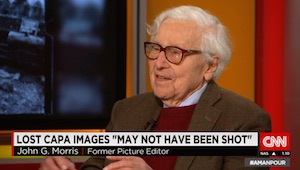
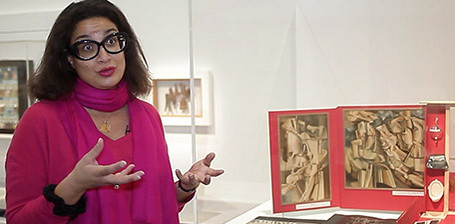
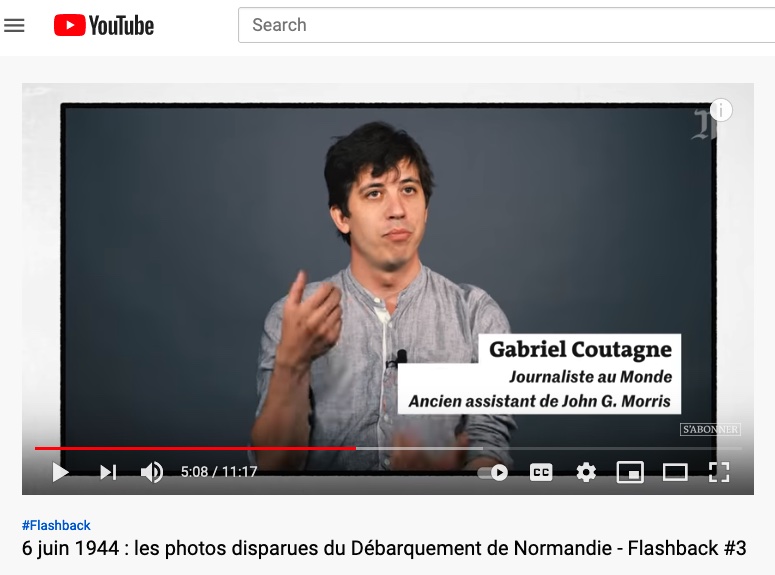
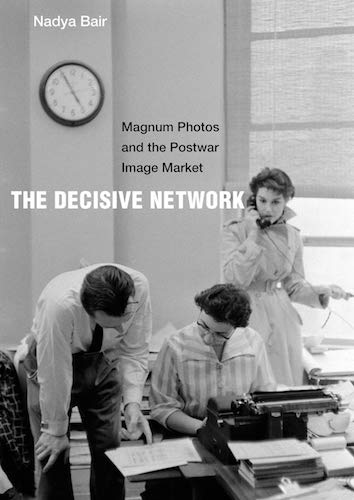
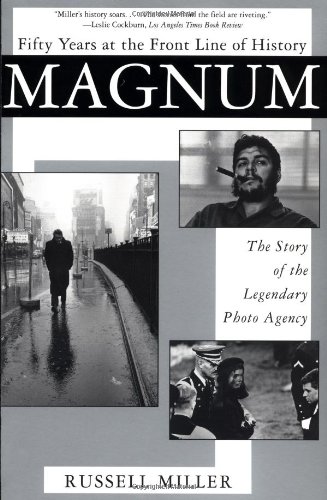
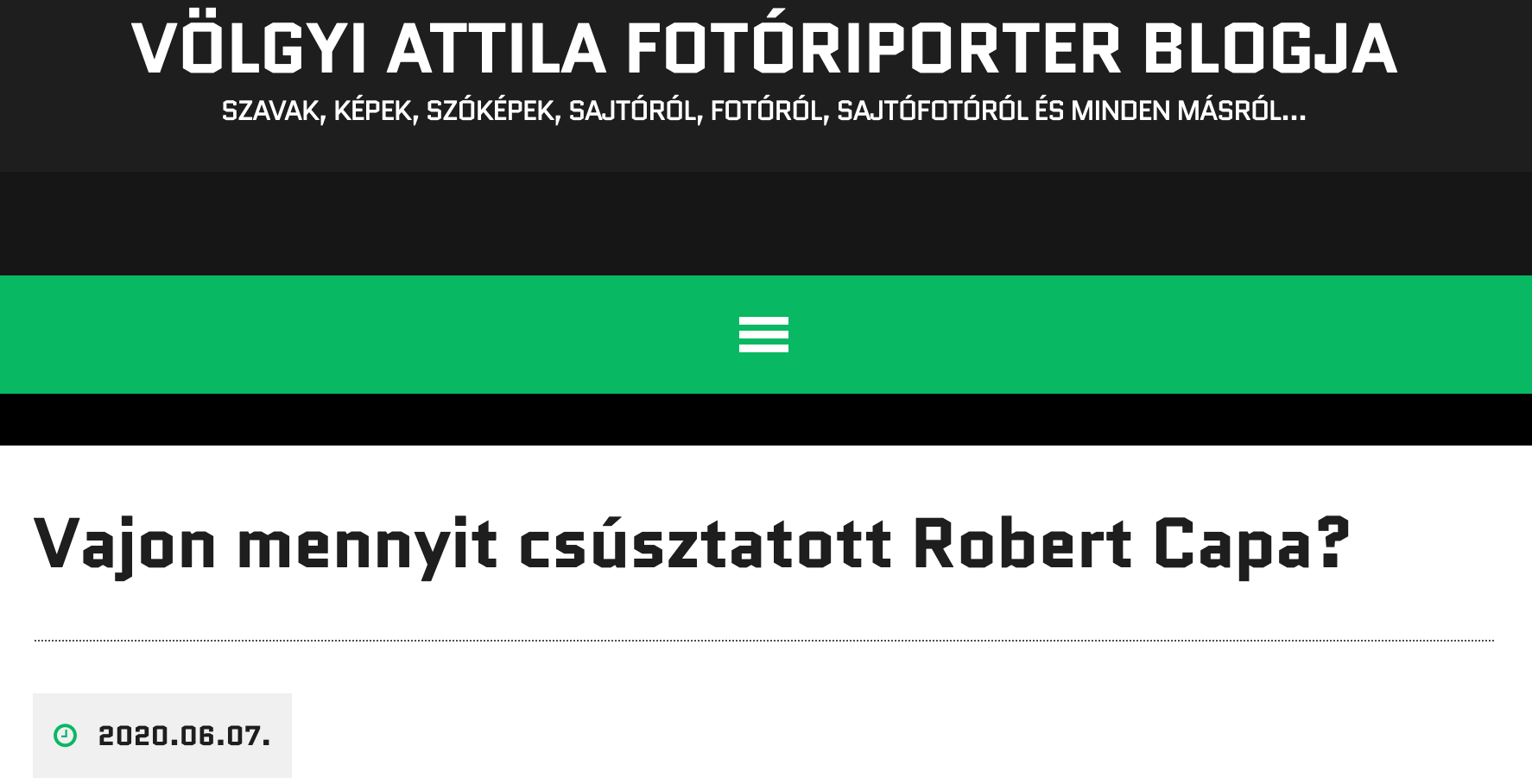




You referred in Capa #49 to the reverence that Hungarians feel for Capa. During WW II, Hungary was pro-Nazi and anti-Semitic. Are you aware of things that have been said and done to indicate that Capa is revered by its photographic community or the general population despite that he was Jewish and openly anti-Nazi from the late 1930s until he died?
Best wishes,
Marty Magid
Without in any way denying that anti-Semitism and pro-Nazism thrived in Hungary in the first half of the 20th century, went underground briefly immediately after the war, revived soon thereafter, and thrive at present —
* In 2013 the Hungarian government issued a commemorative Robert Capa stamp, and a 5,000 forint ($20) Capa gold coin, honoring the centennial of his birth there.
* There’s a Robert Capa Contemporary Photography Center in Budapest, featuring the world’s only permanent exhibition of his images. The Hungarian government helped fund this exhibition with a 500 million HUF (1.64 million EUR) government grant to refurbish the property and to construct an extension.
* The collection of the Hungarian National Museum includes almost one thousand Capa photographs. The Hungarian state purchased this Capa “master collection” in 2008 from the International Center of Photography (ICP), for about 300 million HUF. It is apparently one of only three such sets in the world.
* Many books by and about Capa have been translated into Hungarian and published there.
* There have been countless newspaper and magazine articles, as well as radio and TV shows, plus internet presentations, devoted to Capa’s life and work published in Hungary over the decades since WWII.
So, by any measure, Hungary’s government, its photography community, and its cultural scene have done just about everything possible to pay their respects to Capa, in my opinion.